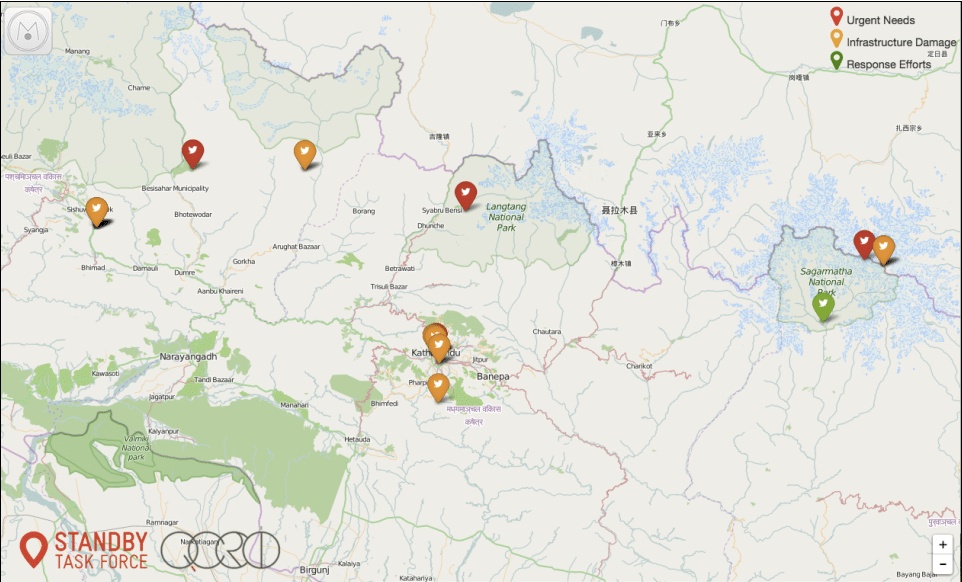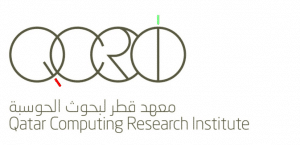Ahead of CSW Global 2016, April 11-15, we caught up with one of our event speakers, Heather Leson, Program Manager at the Qatar Computer Research Institute. Here, Heather shares insights of how her work, driven by a mission to engage people and build communities for global open source projects, is leveraged by the power of the crowd.
What are you, and the Qatar Computer Research Institute as an organisation, most passionate about right now?
Getting people involved in their world with technical skills is my life’s mission. Last month in Cairo I attended a Data-Driven Innovation workshop focused on data journalism skills. The room was full of people from diverse backgrounds: students, governmental bodies, university professors, NGOs, INGOs and journalists—which was a testament to the growing communities who are transcending offline and online skills. These types of events demonstrate the potential of crowdsourcing. Each of the teams learned how their analysis skills can make a difference locally and globally.
To advance crowdsourcing, we need digital step ladders of engagement providing small, medium and large opportunities across the world. Connecting ideas, technology and people to real-world issues is a gift of learning and sharing. Side by side I have worked on global teams for digital humanitarian activities from large scale data scrambles to humanitarian mapping, from satellite imagery to crowdsourced microtasking. At QCRI, we create human computing and machine learning tools giving people a chance to make quick decisions on text or images for humanitarian emergencies. They can do this from the comfort of their homes or via their mobile devices. The next goal is to expand the circle to have more digital crowdsourcing participants in many languages and in many regions of the world.

Heather attended Data-Driven Innovation Week hosted in Cairo in Feb 2016, where activities included youth camps, roundtable discussions, training and workshops
What is the greatest challenge facing your industry in the digital era?
Power, access, risk, bias and education are often cited as challenges for crowdsourcing. While people often refer to digital skills for crowdsourcing, however, barriers to contribution are changing when you consider tools like field papers which help people create paper maps of their communities. This requires program planning and training in one’s own language keeping in mind local knowledge and culture.
The Secretary-General of the United Nations, Ban Ki-moon released his report leading up to the World Humanitarian Summit. He cited the biggest challenges: “We need to embrace the opportunities of the 21st century. Capacities to prevent and respond to crises are now diverse and widespread. Community-level capacity in many crisis and risk-prone environments has increased. Technology and communications have given more people the means to articulate their needs or offer their assistance more quickly. Yet, international assistance too often still works in traditional ways: focused on delivery of individual projects rather than bringing together expertise to deliver more strategic outcomes. We operate in silos created by mandates and financial structures rather than towards collective outcomes by leveraging comparative advantage.”
How is QCRI leveraging the crowd to create positive disruption? Tell us about your greatest accomplishment?
Qatar Computing Research Institute is focused on how we can apply our research using the latest technology. Crisis computing is exploring new ways to engage the growing local and global community with diverse data types. We have plans for more aerial imagery clickers and multi-language clickers. In 2013, we had under 1000 people contribute to the MicroMappers response (Typhoon Haiyan) and in 2015 for the Nepal earthquake there were 2300.
This growth is a testament to outreach and usability of our small task contribution tool sets. We continue to improve the software and build partnerships to connect the information insights to action. The larger Digital Humanitarian Network response of digital contributors continues to grow. More complex tasks via the Humanitarian OpenStreetMap Team had over 8000 contributors for the Nepal Earthquake. This shows how the digital step ladder can help people contribute while giving them a learning journey.

MicroMap of the Nepal earthquake in April 2015: This crowdsourced Crisis Map aided the identification of urgent needs, infrastructure damage and response efforts based Twitter post info
Sharing your most compelling reason or idea around massive opportunity, why should organisations embrace the crowd?
What if these crowdsourcing tools and communities could help get more people across the world involved in small, medium and large volunteer tasks that address the Sustainable Development Goals (SDGs)? Around the globe there are incredible stories of local and global communities collaborating. How can we link these activities to each of the 17 goals from sustainable cities to climate action? This is why we need more people and solutions to really connect crowdsourcing and ground truth.
What is the single most important step your industry can take toward further embracing the crowd economy in the next five years?
We need to collate some of the tools, curriculum and best practices for crowdsourcing. Then, dig into the questions: What does implementation look like? How can we build a collaborative roadmap to help people apply these on the crowdsourcing journey, not just for the SDGs but for other projects that build entrepreneurship and local opportunities? As early adopters, we have this responsibility to connect the best minds from research to industry to creative people to real action, step by step.
Join Heather at Crowdsourcing Week Global on Wednesday, April 13 in London when she will speak about Digital Responders Everywhere.
Head over to the Crowdsourcing Week Global 2016 hub for more insights, expertise and passion of the thought leaders and innovators speaking at this year’s conference. Join us 11-15 April in London for a week of fresh ideas and insights on the global Crowd Economy. Register here for exclusive pricing, available only for limited time.





0 Comments